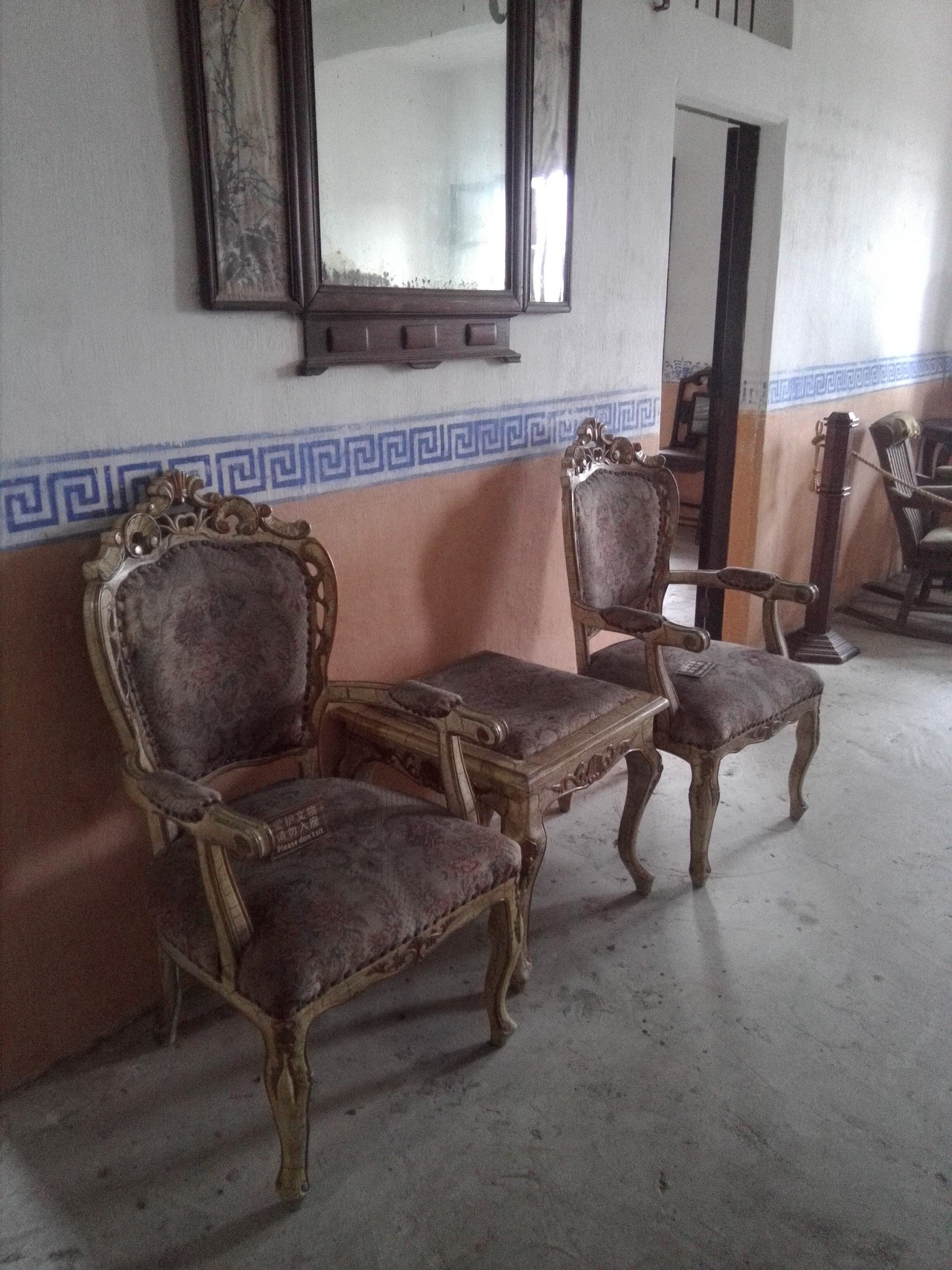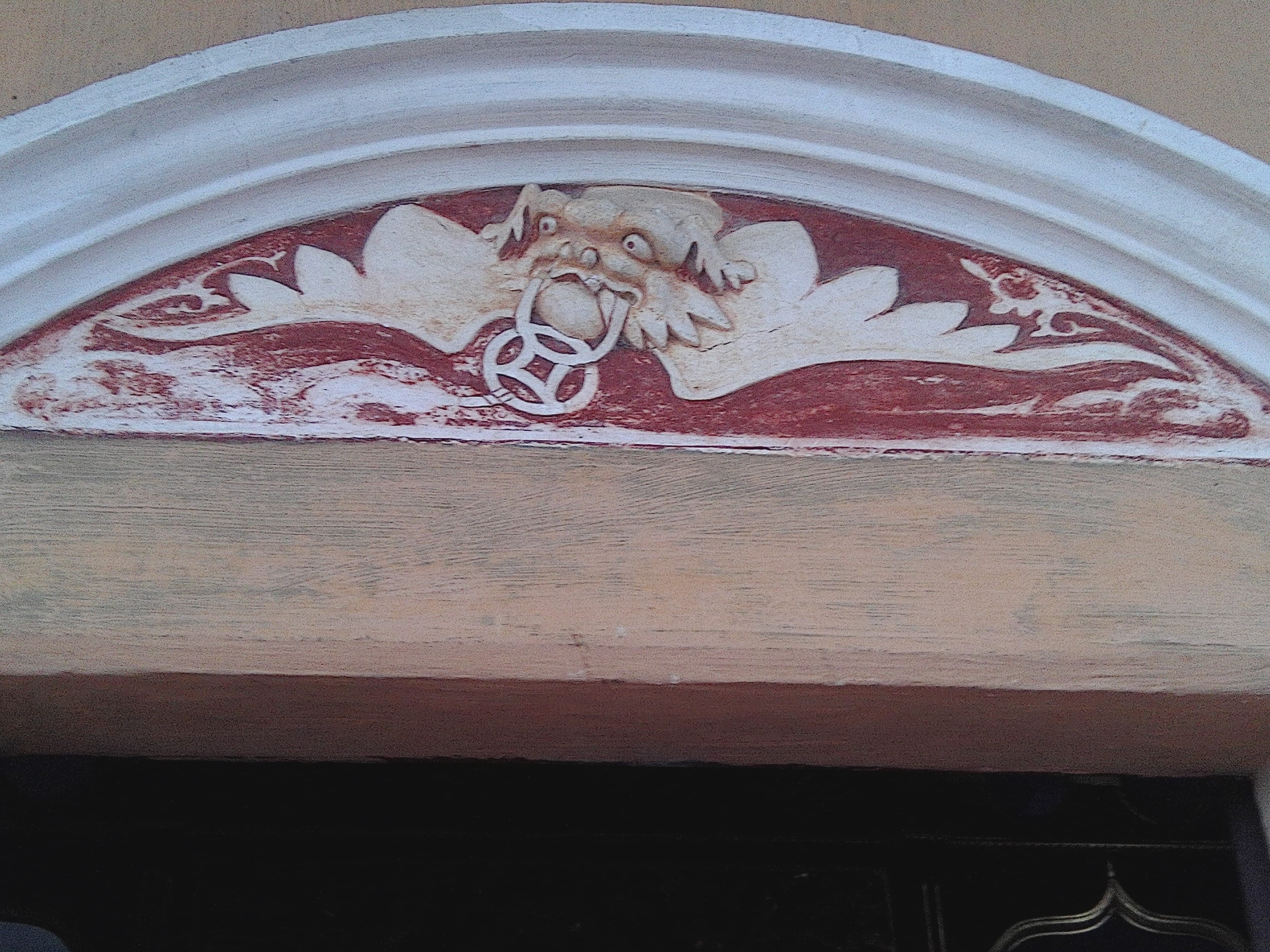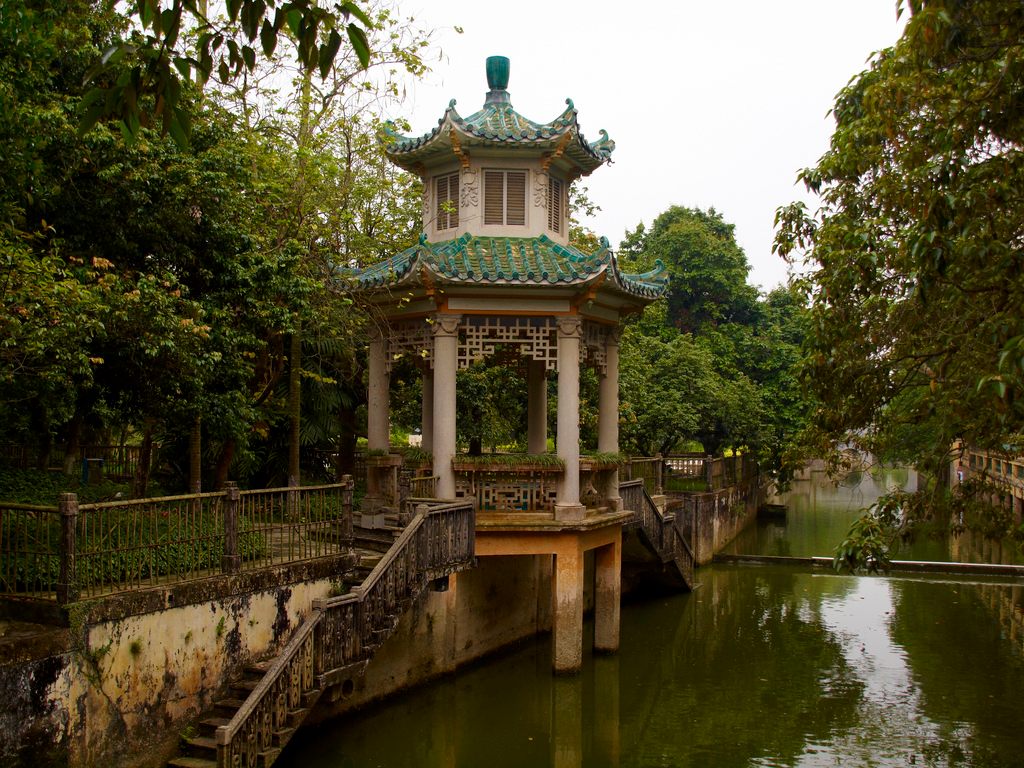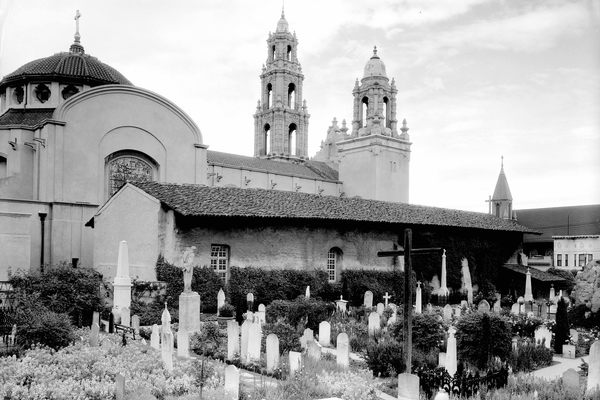The Lovely Chinese Watchtowers Built with Proceeds from the California Gold Rush
Kaiping Diaolou, fortified towers in Guangdong, China. (Photo: Kevin Poh/flickr)
Three hours out of the Chinese mega-city of Guangzhou, through the sugarcane and banana plantations and deep into the rice paddies, strange things start to rise from the fields. Called diaolou, or watchtowers, they have an oddly Western look, frosted with arches and spires and little domes that contrast with the straight lines of many traditional Chinese houses. There are more than 1,800 of these towers standing today, reaching five, six, seven stories tall.
There is a reason for their unusual appearance. This part of China was home to the Chinese who mined for gold and built the railroads and opened laundries and groceries in the late 19th century in the United States. The towers were built with the proceeds—they show a mixture of new tastes picked up in distant lands and local Chinese building styles that’s unique byproduct of a very particular history.

Fields near the towers. (Photo: Payton Chung/flickr)
The first towers were built in the Ming Dynasty, about 600 years ago. This region, called Siyi in the 1800s, is prone to flooding, and whole villages were saved from drowning by retreating to tall, castle keep-like structures. But according to Wuyi University historian Selia Tan, the tower building didn’t begin in earnest until after the 1840s, when the Imperial court, responding to a British demand for laborers, decreed that people would be allowed to leave the country for work. Around the same time, rebellions devastated much of southern China. In Siyi, a 12-year war between local inhabitants over land left the area in an even worse situation. When gold was discovered in California in 1848, Siyi people were looking for a way out. Across the mouth of the Pearl River Delta, down to the harbor of Hong Kong they went, and then over the Pacific.
In California, the migrants sifted for gold in the mountains and later hired themselves out to work on building the new transcontinental railroad. Ninety percent of the Chinese in California in the 19th century were from Siyi, by one historian’s estimate. The language that rang through Chinese camps in the gold country was not Mandarin, the northern tongue many people today call “Chinese,” but a dialect of Cantonese, the language of the south. The more enterprising new arrivals learned English and set themselves up as middlemen and eventually, merchants.
All the while, money flowed back over the ocean, via Wells Fargo and other banks. Migrants to “Gold Mountain,” as California was known, left their wives and children at home. Sue Fawn Chung, a historian at University of Nevada, Las Vegas, notes that clan leaders in the villages encouraged the migration, in part because the money could contribute to the clan’s goals back home. “By sending men overseas,” she says, citing one particular pair of feuding clans, “the clan coffers would increase to buy land that impoverished farmers of the other clan had to abandon.” The migrants were just the Western-most edge of this clan structure.

Padded Western-style chairs, very different from the sleek wooden chairs of traditional Chinese furniture, in a tower converted into a museum in Zili Village. (Photo: Veronique Greenwood)
Returnees from Gold Mountain, however, found that in terms of civil order, things were not very much improved in Siyi. They became the targets of banditry, their wealth was a liability, and they began to build fortified houses. These had thick walls and stretched many stories—some even had gun turrets, Tan says. Of the towers that still stand, about 500 were built to provide shelter for whole villages, about 200 were built to keep watch over the approaches to towns and provide warning of marauders, and more than 1000 were private houses. Some migrants who never returned—after the passage of the US Chinese Exclusion Act of 1882, leaving the States meant they would never be allowed back in—still ordered from afar that such houses be built, and their families complied.
And what houses! In Zili Village, where modern-day villagers go about their lives among a constant stream of sightseers, tourists can climb one of the Fang clan’s towers. Black-and-white photos of the builder and his three wives, he in a Western tie and suit, they in Chinese dress, are displayed in elaborately carved wooden frames in the foyer. Just steps away from a sturdy Chinese kitchen hearth with enormous woks are a Victorian writing desk, a heavy grandfather clock, a wooden box that once contained whiskey. On the fifth floor is a terrace bounded by Doric columns, and leaning out, the visitor can see other towers equipped with cast-iron shutters and Romanesque arches, set against the incandescent yellow-green of the rice paddies.

Bats are considered lucky in Chinese culture; this one is decorating the lintel of a door in a watchtower. (Photo: Veronique Greenwood)
At the Liyuan Gardens complex not far away, a tower rises warlike from a collection of stately buildings and gardens, complete with canals and an Arab-inspired bird pavilion. The tower was built in 1917, when banditry was still a serious concern, but from 1926 to 1928, concerted efforts by local inhabitants and the government to quash the raiders were finally successful. The rest of the complex was built in the more staid 1930s.
How did their builder acquire such fabulous wealth? According to tour guides, he operated a drugstore in San Francisco. His tower home is furnished in grand style, with Italian tile floors and mahogany beds. An American flush toilet still stands in a bathroom on an upper floor, a testament to habits acquired in a far-off land.

Liyuan Garden. (Photo: Kevin Poh/flickr)
Today, the diaolou are mostly empty, says Tan, who grew up in the area herself. Their owners—the descendants of their builders—now live overseas. But in 2007, 20 of the towers were awarded UNESCO World Heritage status. And lately, some descendants have started to come back to learn about their families’ roots.
David Fong of Newfoundland first visited the area in 2010, following hints left by the return addresses on two envelopes sent to his grandfather in the 1940s. He discovered that in the village next to Zili, his great-uncle had built a four-story tower in 1931, and that his cousin’s wife was still living there. “We’ve identified at least 50 relatives and met a good many of them,” Fong says now.
On that first visit, he saw photos of himself and his siblings that his dad had sent to China years before. But their father never mentioned the old hometown to his children. The place where the towers rise from the rice paddies dropped out of sight for his descendants, to be rediscovered only years later.









Follow us on Twitter to get the latest on the world's hidden wonders.
Like us on Facebook to get the latest on the world's hidden wonders.
Follow us on Twitter Like us on Facebook